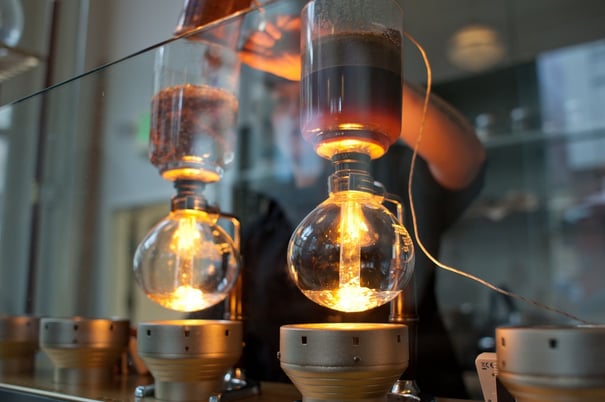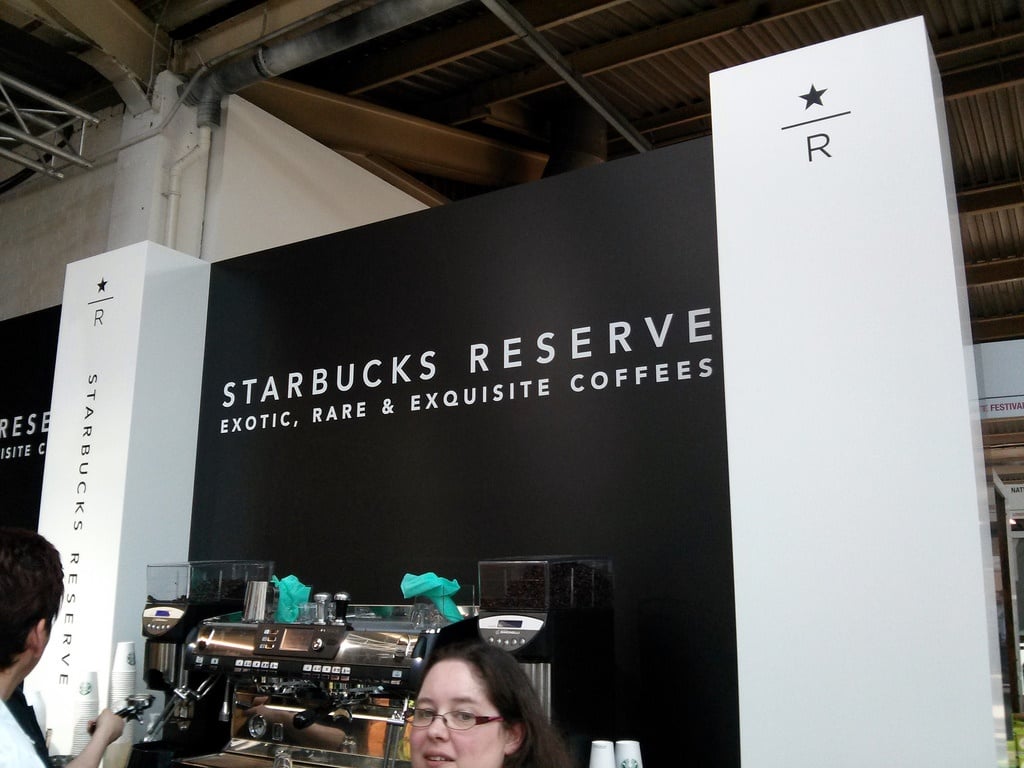Starbucks has been on quite the run. With operating income up 16% to $4.2 billion this year and 690 new locations opened in the last quarter alone, the coffee titan now operates 25,085 stores in 75 countries. But that doesn’t mean it’s resting on its laurels—far from it: the company recently announced its CEO would step down to focus on a new project, rolling out a new high-end coffeehouse concept called Starbucks Reserve.
The new cafes are part of a broader strategy to combat the challenges brought on by Blue Bottle, Intelligentsia, and other third wave coffee purveyors. Reserve locations will be approximately twice the size of typical Starbucks cafes, will serve wine and beer, and also offer in-house, fresh-baked breads and pastries from Italian chef Rocco Princi. Customers will pay $10 for a coffee (served in a glass siphon), for a “flight” of reserve brews, or for a cup of nitro cold brew. Complete with a 45-foot bar, the locations emphasize coffee as an experience rather than a daily necessity, as Starbucks hopes to reinsert itself at the forefront of coffee conversations.
Your Mom’s Coffee House
The company faces an ironic though not uncommon problem: though they introduced coffee culture to much of the country and singlehandedly got people off the freeze-dried stuff, they now appear stale to the next generation of coffee consumers. Twenty- and thirty-somethings who grew up with Starbucks already established as the coffeehouse standard now seek something more unique and intense than the familiar green and black. As one market research analyst observed, “There is always a market for what is different, special and rare, but the minute you become so available that anyone can get what you are selling, you lose your cachet.” With coffee figuring into consumer identity in ways similar to wine and whiskey, millennials aren’t all that interested in the identifiers offered in the mainstream.
With their employees derisively referred to as green-aproned-button-pushers (because the espresso machines are automated) among coffee enthusiasts, Starbucks understands their brand is losing street-credibility according to Ric Rhinehart, Executive Director of the Specialty Coffee Association of America, who believes, “Starbucks is the millennials’ parents’ coffee house and Starbucks is acutely aware of that.”
Calling Up the Reserves
The Reserve cafes are just one part of Starbucks’ upscale aspirations to counteract that image. The concept originated in bulk coffee, where Starbucks began selling a special Reserve brand made up of limited-time offers on unique and often seasonal blends. Now, Starbucks Reserve cafes will serve the Reserve brand, with the first few already open in New York, Chicago, Atlanta, Baltimore, and Boston and up to 1,000 more expected in the next few years.

Additionally, they plan to open ultra-premium Reserve Roasteries in about 30 urban locations around the world, to serve as flagships with Shanghai and New York City locations opening first. All this glamor will ultimately trickle down to about 20% of their existing Starbucks cafes as well, where they will integrate a “Reserve Bar” selling premium beverages alongside their standard offerings.
This doesn’t mean the company is abandoning its more ubiquitous café concept, as CEO Howard Schultz assured investors the Reserve rollout had nothing to do with the health of Starbucks cafes as we know them: “There is no issue in the core business. We’re merchants. We have to be creative, we have to be innovative.”
The Romance, The Theater
In today’s marketplace, innovative often means experiential—not merely selling customers a product but also an experience, be it recreational, educational, or even spiritual. Thus, Starbucks’ design director emphasized the experiential aspects of the enterprise: “The theater of coffee is the first thing you see when you walk in the door and it says, ‘Come here, sit down, learn more.’”
Indeed “theater”—along with “romance”—are terms that repeatedly pop up in corporate descriptions of the enterprise, with Schultz similarly promising “A lot more theater, a lot more romance” and the company’s press release touting that Reserve cafes will “integrate the theater and romance of the Roastery with the unique culinary experience of the company's new Italian food partner, Princi.”
In a world of retail-entertainment and experiential dining, Starbucks is hoping customers will (much like they did in its early days) sit down and stay a while. In fact, with customers paying more and staying longer, they think Reserve locations can drive twice the financial returns of a typical Starbucks, which pulls in an average of $1.6 million in unit sales. It is also, according to one analyst, “a reminder that they did this first and they do this best.”


